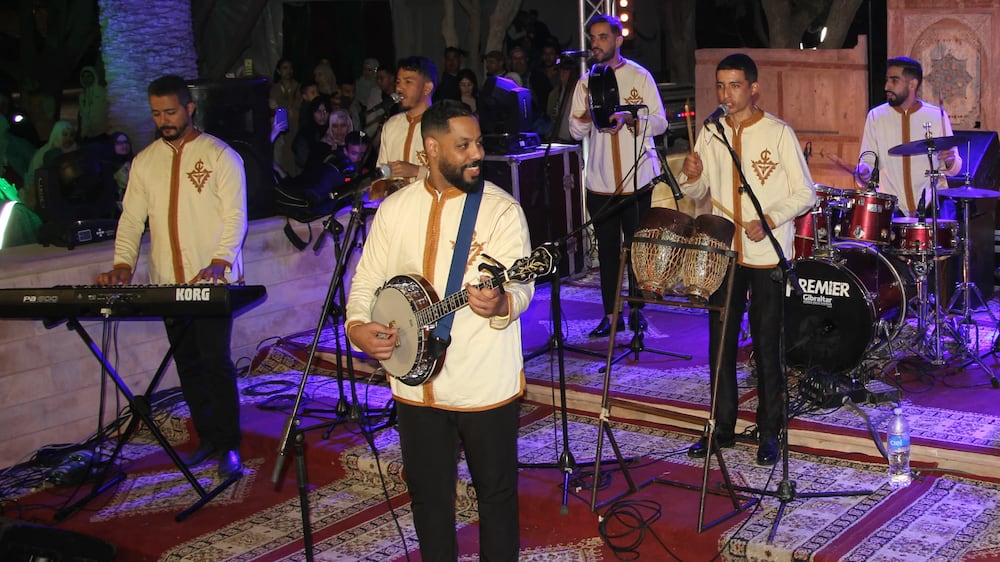For decades, Morocco’s indigenous Amazigh communities celebrated their new year, observed on January 13, unofficially among family and friends.
The celebrations kept centuries-old traditions alive, from wearing traditional attire when among friends and family, to cooking Amazigh recipes passed down by generations, such as the corn dish tagulla, whose hidden date stone is believed to bring prosperity for whoever finds it, and putting on traditional songs and plays.
But this year’s Idh Yanayer, as the event is locally known, enjoys a much-awaited shift.
In May last year, Moroccan King Mohammed VI declared the event to be a national paid holiday, in a move seen as recognising and embracing the heritage of North Africa’s largest Amazigh community.
Houda Belkhaouda, 21, originally from the city of Doukkala in west-central Morocco, told The National she was overjoyed with the “long overdue” decision. For her, the move reflects a significant cultural transformation in Morocco.
“This decision should have been made long ago, because it is a matter of great importance to Amazighs. The new year does not just reinforce our identity and our cultural connection to Morocco, but it is also an indivisible part of our celebrations, just like celebrating the Gregorian and Hijri new years,” she said.
The move has given this year's celebrations a boost of pride and joy, with a sense of victory for the Amazigh community.
“It’s not just the Amazighs celebrating. Public institutions will also participate in the festivities across the country and share this beautiful occasion with the people,” said Abdellah Elmannani, Moroccan filmography writer, researcher and Amazigh scholar.
In stark contrast to previous years, the celebrations expanded beyond private family gatherings to public gardens, halls, and streets.
Various events are taking place in a week-long celebration from January 8 to January 14 in major cities from Agadir, to Casablanca and Marrakesh, including film screenings, lectures, music performances, and culinary and cultural activities that celebrate Amazigh heritage.
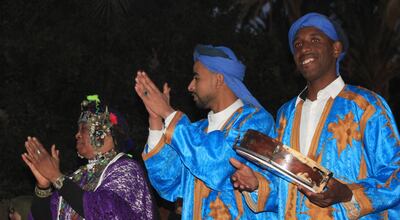
Much awaited recognition
According to a 2023 report by the International Work Group for Indigenous Affairs, about 28 per cent of Morocco’s 37.8 million people in 2016 speak Tamazight, the Amazigh language, as shown by the most recent census. However, Amazigh associations put the number higher, to between 65 per cent and 70 per cent of Moroccans.
Throughout Morocco’s history, priority was given to the Arabic language instead of the indigenous language of Tamazight, “causing the latter to become at risk of extinction”, said Lahoucine Bouyaakoubi, professor of anthropology and Amazigh studies at Ibn Zahr University.
For decades, Moroccans claiming Amazigh heritage say their identity was suppressed and their history and culture marginalised, with the UN Human Rights Office of the High Commissioner stating that the communities continue to face “persistent discrimination, structural exclusion and racial stereotyping”.
In November, the UN Committee on the Elimination of Racial Discrimination called on the Moroccan state to take more serious steps to preserve Amazigh language and culture, and ensure equal economic, cultural, and social rights.
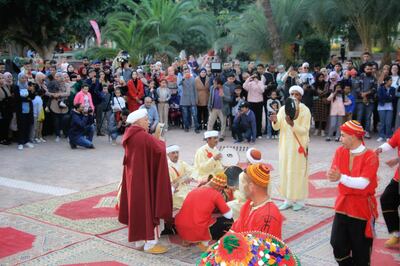
The Amazigh struggles gave rise to an identity movement, which gained momentum in Morocco, demanding that the population’s language, heritage and events be acknowledged legally and officially as an integral part of Moroccan identity. “The Amazigh movement emerged in the late 1960s and succeeded in convincing the state of the need to recognise the language and ensure its development,” Prof Bouyaakoubi, told The National.
The campaign for language recognition achieved a major success in 2011, when Tamazight was added as an official language, with Arabic, in the Moroccan constitution.
The move marked the first time that Amazigh identity was acknowledged on a constitutional level and came against the backdrop of the 2011 uprisings across the Middle East and North Africa in which many called for political, economic and social reforms.
The kingdom has since taken strides to embrace the many identities in Morocco, integrating Morocco’s Amazigh and their culture in official and public institutions, including education, media and others. The nationwide celebration of Idh Yanayer this year – which marks Amazigh year 2974 – is the latest such move.
“The official recognition of this holiday has appeased many Moroccans especially that the Amazigh Cultural Movement has long called for this recognition and has finally realised its demands,” Mr Elmannani said.
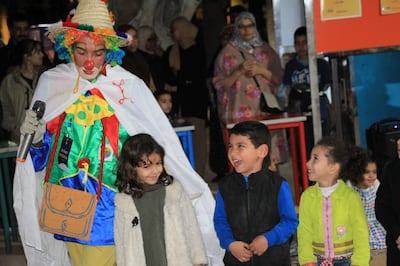
Ancient celebration
Prof Bouyaakoubi says that Yanayer is an ancient tradition linked to the agricultural cycle and has no known start date. However, as the Amazigh communities in Morocco and North Africa became more aware of their identity as the indigenous people of this region, the need for an annual starting point celebration emerged.
“In the late 1970s, January 13 was proposed as a date for the celebration, considering its historic significance that marks the ascension to the throne by Sheshonk I – an Amazigh by origin – as king of the 22nd dynasty of ancient Egypt in 950 BC. In 1992, Yanayer was adopted as a symbol for Amazigh identity by the Amazigh civil society,” he said.
“But the tradition itself is as old as the Amazighs and dates way before 950 BC,” he added.
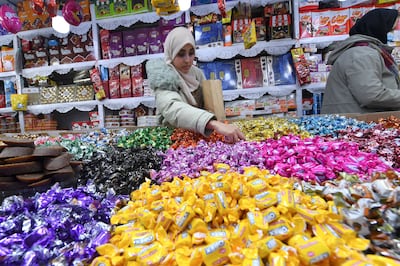
For the Amazighs, the new year also signals the start of the crop rotation and in their celebration they hope that it brings prosperity, Prof Bouyaakoubi said, which explains the use of seasonal crops and produce to prepare traditional dishes.
“The Amazigh new year reaffirms our ancestry in North Africa and our deep roots in the region. It is a spiritual occasion that connects us to the land, through its abundance and produce which give us life,” Mr Elmannani told The National.
For his part, Abderrahim Elatrach, 36, a Moroccan Sahrawi – another ethnic community – from the southern city of Tan-Tan, said the decision reflects a “growing collective awareness in the significance of taking pride in Amazigh culture, which is an important part of Morocco’s cultural diversity”.
But Khalid Afriad, 28, who is of Amazigh origin, said while the move is a “good step, it remains symbolic in the face of the socio-economic challenges faced by the Moroccan people”.
“It would have been better if the public debate around the issue had been to directly address the lives of citizens,” he said.
This article was published in collaboration with Egab.
